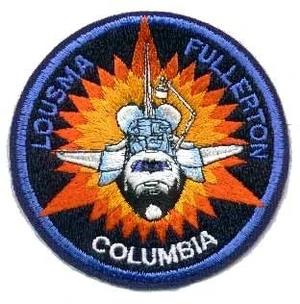Jack R. Lousma
C. Gordon Fullerton
STS-3
Astronauts:
(First Space Flight)
(Second Space Flight)
The Space Shuttle Missions
STS-3
Command Pilot:
Pilot:
Study
Research
Main Index
Space Cosmology
Science Research
*
About
Science Research
Science Theories
Desk
Site Map
BookShelf
Copyright © by Nigel G Wilcox · All Rights reserved · E-Mail: ngwilcox100@gmail.com
Designed by Nigel G Wilcox
Powered By AM3L1A
Pages within this section: USA Shuttle Mission Flights
STS-3
Pages within this section:
1
M
8
SM
Sub-Menu
menu
2
3
4
5
6
7
8
9
Backup Crew:
Commander: Thomas K. Mattingly II
Pilot: Henry W. Hartsfield Jr.
STS-3 was NASA's third Space Shuttle mission, and was the third mission for the Space Shuttle Columbia. It launched on 22 March 1982, and landed eight days later on 30 March. The mission, crewed by Jack R. Lousma and C. Gordon Fullerton, involved extensive orbital endurance testing of the Columbia itself, as well as numerous scientific experiments. STS-3 was the first shuttle launch with an unpainted external tank, and the only mission to land at the White Sands Space Harbor near Alamogordo, New Mexico. The shuttle was forced to land at White Sands due to flooding at its originally planned landing site, Edwards Air Force Base.
The primary objectives of the flight were to continue testing the Canadarm Remote Manipulator System (RMS), and to carry out extensive thermal testing of Columbia by exposing its tail, nose and top to the Sun for varying periods of time. The crew found that prolonged exposure to the Sun caused the cargo bay doors to warp slightly, preventing them from closing fully. Rolling the orbiter to balance temperatures around the orbiter resolved the issue.
In addition, in its payload bay, Columbia again carried the DFI package, and OSS-l (named for the NASA Office of Space Science and Applications) which consisted of a number of instruments mounted on a Spacelab pallet, intended to obtain data on the near-Earth environment and the extent of contamination caused by the orbiter itself. Among other experiments, the OSS pallet contained an X-ray detector for measuring the polarization of X-rays emitted by solar flares. A test canister for the Small Self-Contained Payload program – also known as the Getaway Special (GAS) – was mounted on one side of the payload bay.
For the first time, a number of experiments were carried in the shuttle's mid-deck lockers. These included an Electrophoresis Equipment Verification Test experiment to study the separation of biological components, and a Mono-disperse Latex Reactor experiment, to produce uniform micrometer-sized latex particles. The first Shuttle Student Involvement Project (SSIP) – a study of insect motion – also was carried in a mid-deck locker.

Data Courtesy Wikipedia.org












